Honoka 3D-prints furniture that "re-weaves Tatami into modern life"
At Designart Tokyo, Japanese design collective Honoka exhibited furniture and lighting made by 3D printing a material made from discarded Tatami mats.
The exhibition – titled Tatami Refab Project – displayed lampshades, lighting fixtures, tables, stools, basins and plant holders that appeared to glow thanks to the translucency of the material, which was made from grass and resin.
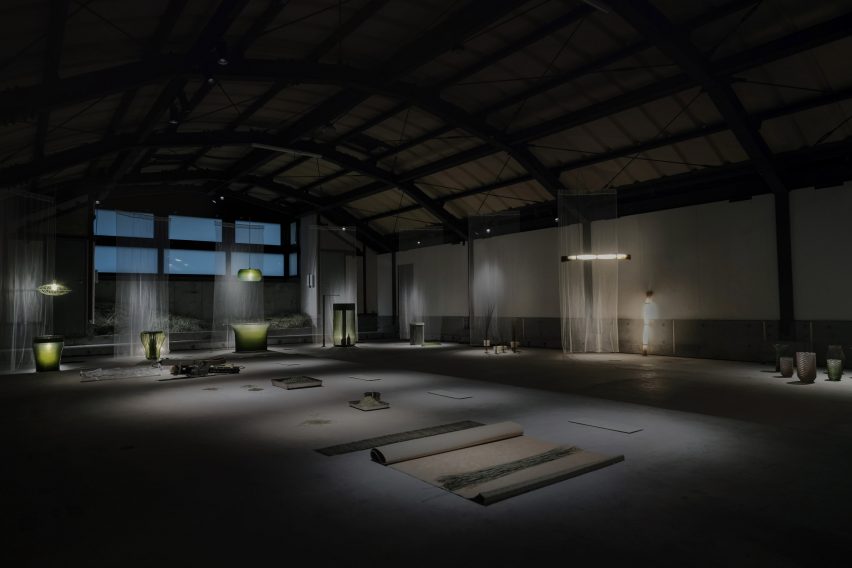
"Honoka has developed a unique material by mixing biodegradable resin with Igusa grass, which is extracted from Japanese discarded Tatami mats," said Honoka.
"Using ExtraBold's large 3D printer, the project proposes furniture that re-weaves Tatami into modern life."
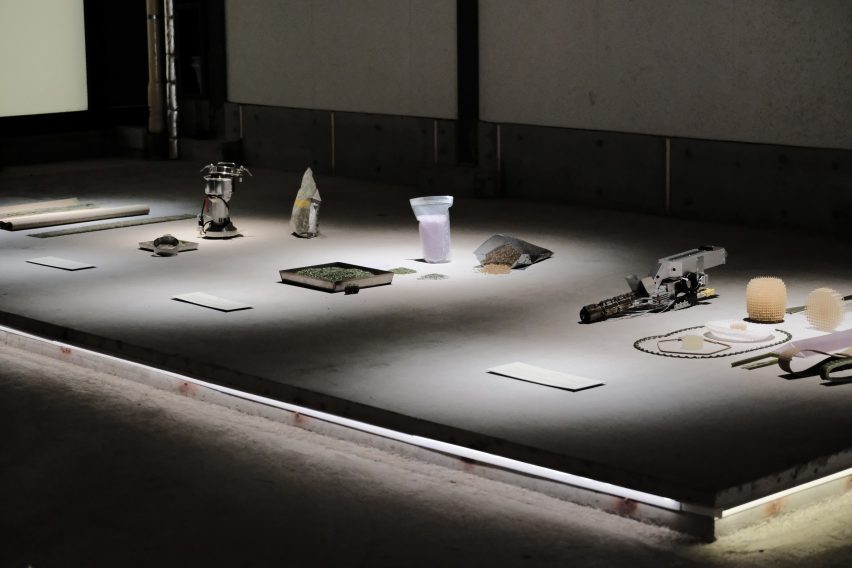
The Igusa grass is cut from the mats and ground up, before being mixed with biodegradable resin.
The resulting pellets were fed through a large-format 3D printer and assembled to create a range of functional homewares and products.
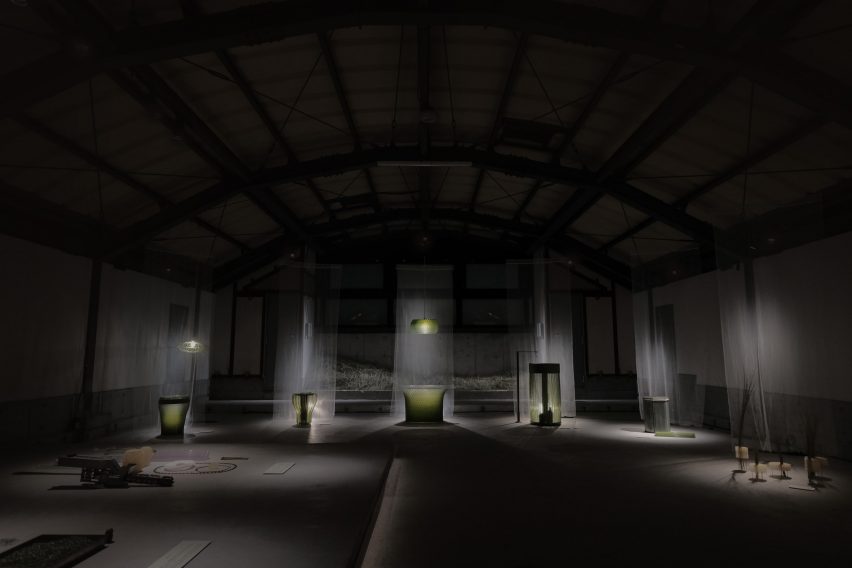
Each piece in the exhibition is 3D printed, yet all have a woven, lattice or knitted effect reminiscent of traditional Japanese craft techniques.
The pieces were coloured beige, clear, green and lilac, with an added dimensional quality depending on how light filters through thanks to their semi-transparency.
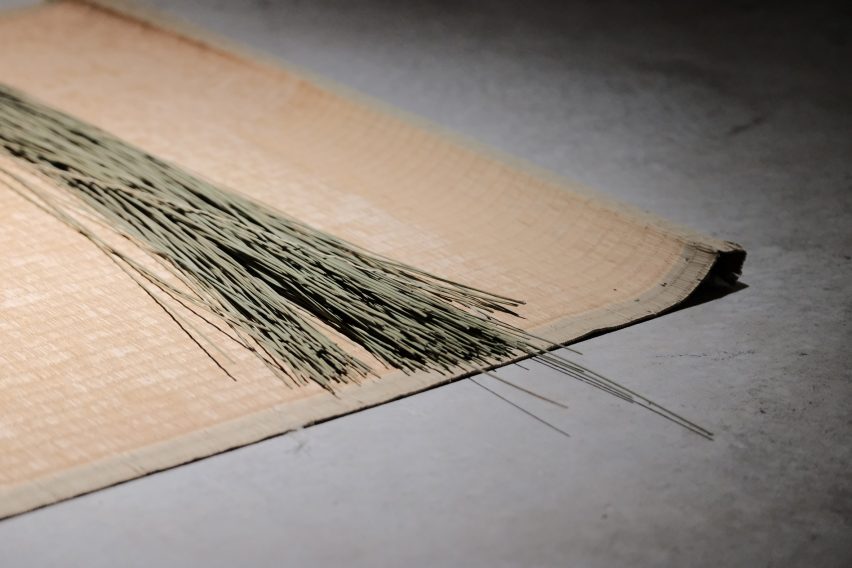
Tatami is a traditional style of mat made from lengths of dried Igusa grass that have been used in Japanese interiors for centuries.
The mats were popular thanks to their ability to control humidity and reduce odours in interior spaces.

The popularity of Tatami mats has seen a decline in recent years, which prompted Honoka to consider how the mats could be repurposed and reintroduced into contemporary interiors.
The result was a series of functional objects and furnishings that reference the frond-like appearance of Igusa grass, as well as time-honoured Japanese craft techniques.
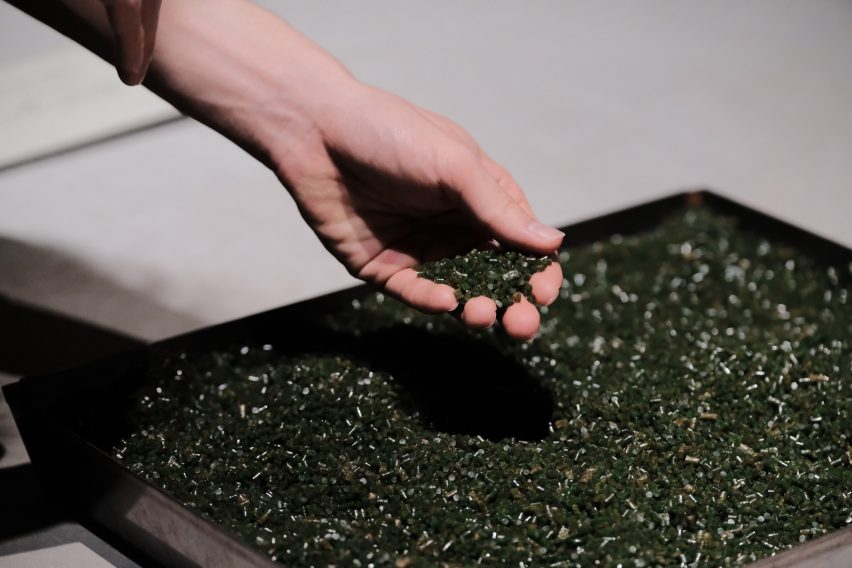
Lighting designs that were exhibited include a basket-like lampshade, the design of which recalls traditional Japanese lantern light shapes, by designer Ryo Suzuki.
Designer Shinnosuke Harada also created a lighting piece. Called Taba, it was shaped like a horizontally hung bundle of sticks bound in the centre and at either end, which references how Igusa grass was transported before being woven.
Fujiwara Kazuki, another contributing designer, also created a lampshade – named Ami – that has a sparse, nest-like effect achieved by dripping the resin from above.
He also designed a matching stool, which has a similarly criss-cross effect seat atop a layered, barrel-like body.
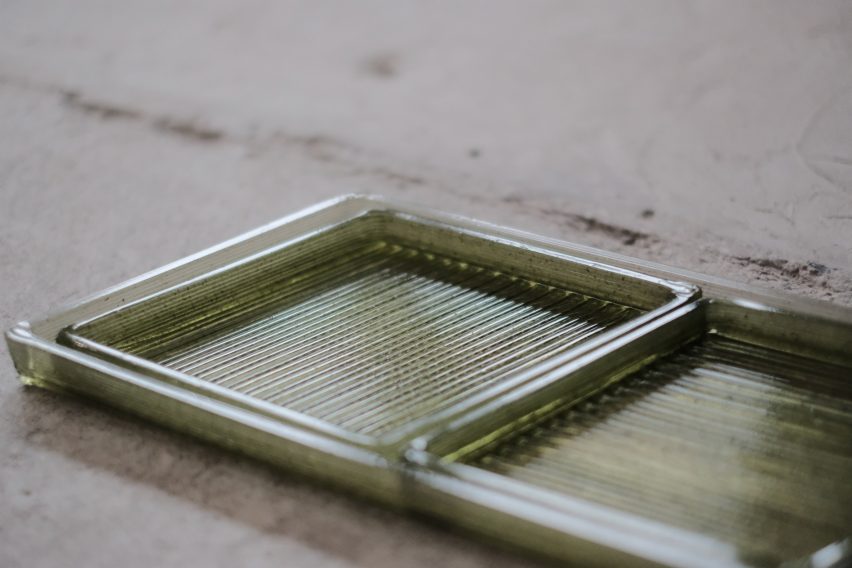
Other stools in the collection include Chigusa by designer Shoichi Yokoyama, which was based on the silhouette of traditional Japanese Sen-suji saucers.
Yocell – a stool designed by Moritaka Tochigi – featured a faceted star-shaped seat informed by Asanoha, a geometric pattern common in Japanese crafts.
Each of the six shapes can be moved in isolation and then bound back together by two rigid hexagonal binders.
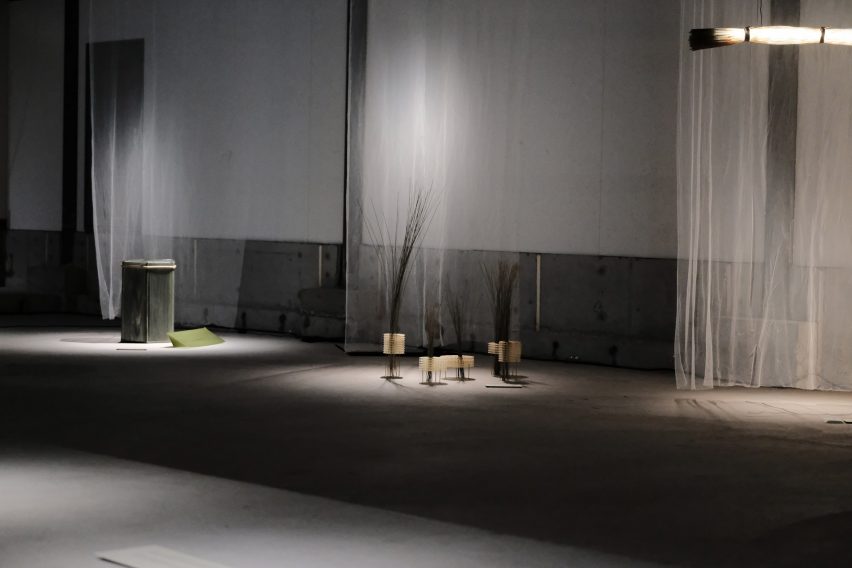
Other items presented at the exhibition include a low table with a 3D printed base that widens to support a clear tabletop, also designed by Ryo Suzuki.
Designer James Kaoru Bury created the freestanding Tachiwaki basin, which features a removable 3D-printed panel to obscure stored products beneath the sink.
Finally, a lattice-like structure for arranging flowers was created by designers Shinnosuke Harada and Moritaka Tochigi, based on the appearance of Japanese architecture.
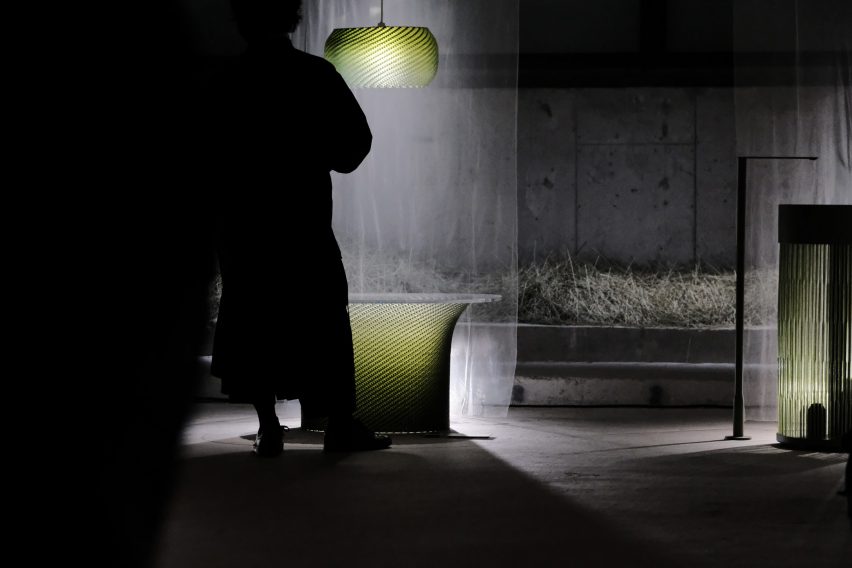
"We designed a series of furniture to re-embed Tatami into modern life using 3D printing technology and recycled materials," said Honoka. "We will continue to inherit the culture of tatami to the next generation."
All of the pieces are available to purchase.
Honoka is a design lab formed of six Japan-based product designers, who aim to create original pieces through the use of 3D printing and other cutting-edge manufacturing techniques and materials.
Other recent projects by Japanese designers include a wooden material that resembles terrazzo by Yuma Kano and Rio Kobayashi's first solo show Manus Manum Lavat.
The photography is by Sota Kamagai, Megumi Kurokawa and Takaho Nagumo.